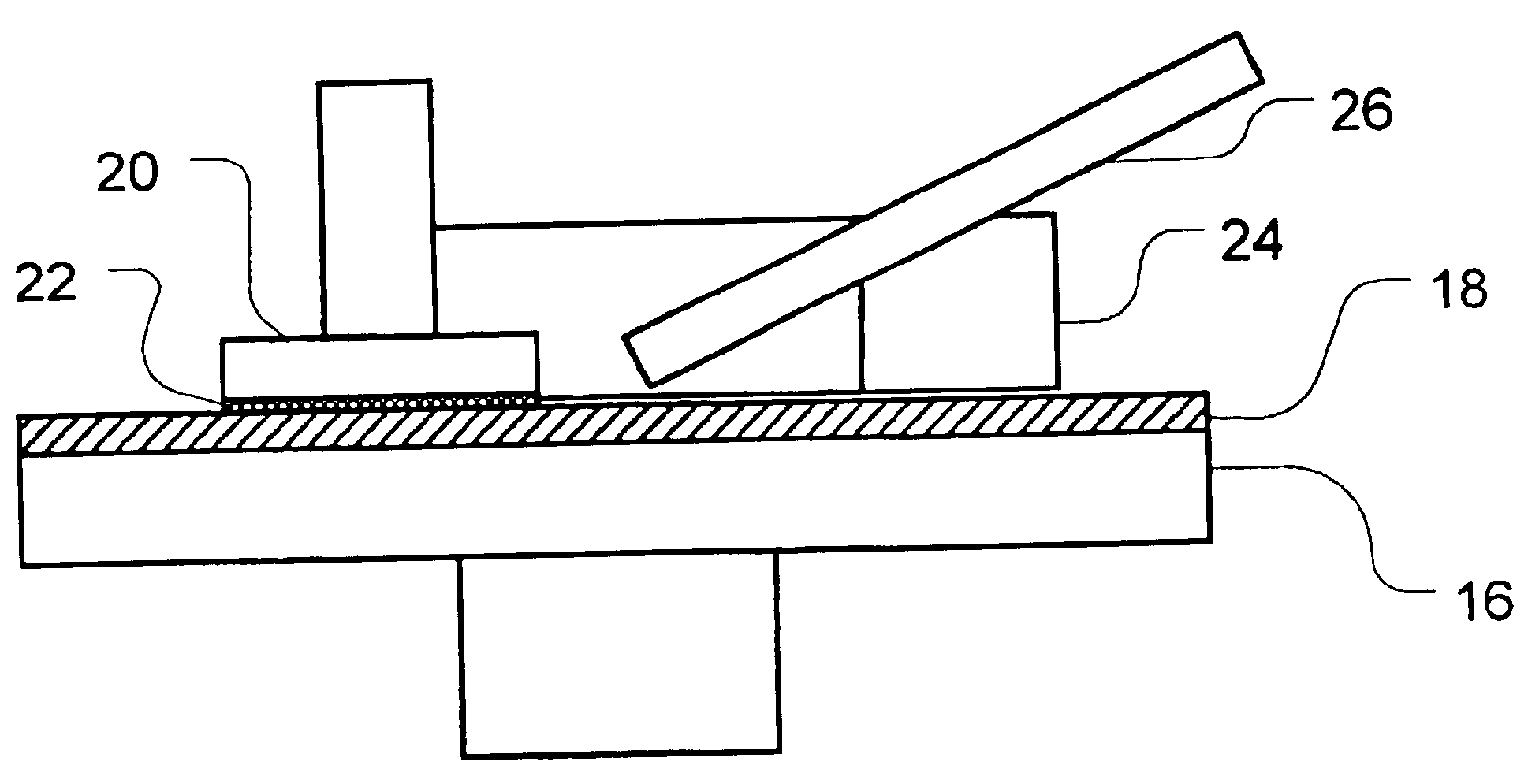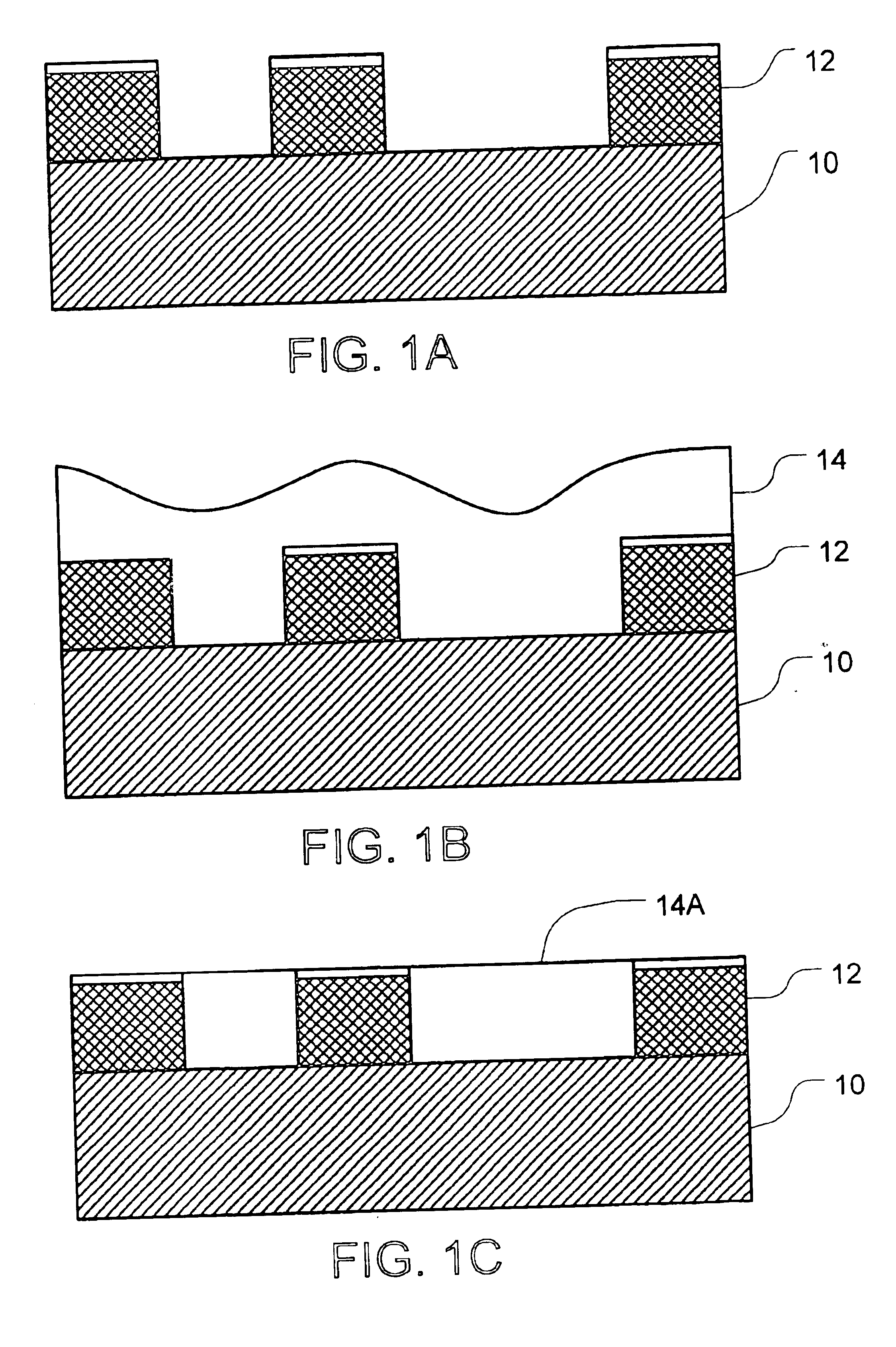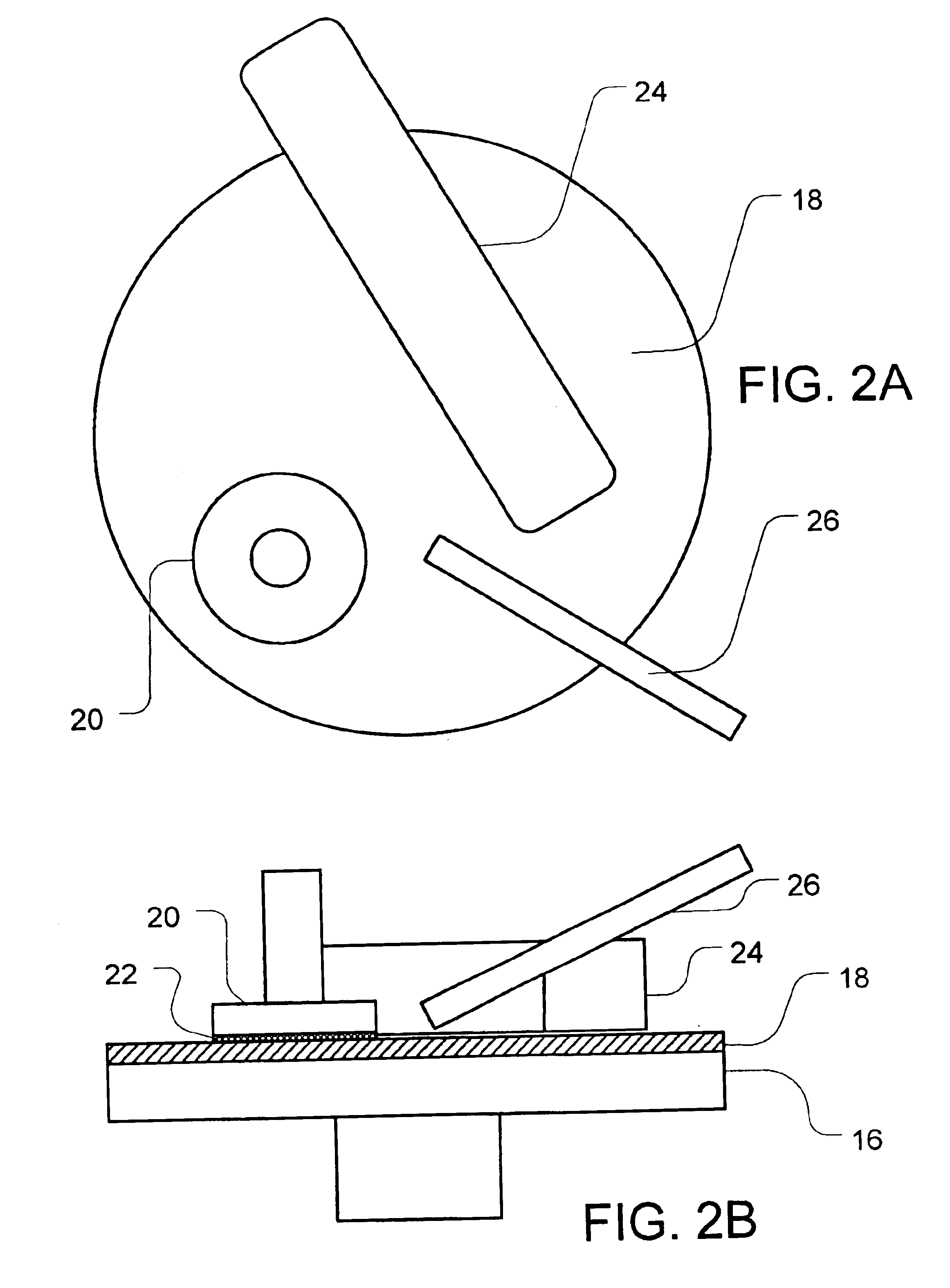Materials and methods for low pressure chemical-mechanical planarization
a chemical-mechanical and semiconductor substrate technology, applied in the direction of lapping machines, manufacturing tools, abrasive surface conditioning devices, etc., can solve the problems of reducing the throughput of the process, reducing the ability to precisely position, and reducing the formation of additional process layers
- Summary
- Abstract
- Description
- Claims
- Application Information
AI Technical Summary
Benefits of technology
Problems solved by technology
Method used
Image
Examples
Embodiment Construction
[0032]Described below and illustrated in the accompanying drawings are certain exemplary embodiments according to the invention. These exemplary embodiments are described in sufficient detail to enable those of skill in the art to practice the invention, but are not to be construed as unduly limiting the scope of the following claims. Indeed, those of skill in the art will readily appreciate that other embodiments may be utilized and that process or mechanical changes may be made without departing from the spirit and scope of the inventions as described.
[0033]The present invention provides methods useful in the production of semiconductor devices. As referred to herein, such devices include any wafer, substrate or other structure comprising one or more layers comprising conducting, semiconducting, and insulating materials. The terms wafer and substrate are used herein in their broadest sense and include any base semiconductor structure such as metal-oxide-silicon (MOS), shallow-tren...
PUM
| Property | Measurement | Unit |
|---|---|---|
| pressure removal rate | aaaaa | aaaaa |
| pressure removal rate | aaaaa | aaaaa |
| particle size | aaaaa | aaaaa |
Abstract
Description
Claims
Application Information
 Login to View More
Login to View More - R&D
- Intellectual Property
- Life Sciences
- Materials
- Tech Scout
- Unparalleled Data Quality
- Higher Quality Content
- 60% Fewer Hallucinations
Browse by: Latest US Patents, China's latest patents, Technical Efficacy Thesaurus, Application Domain, Technology Topic, Popular Technical Reports.
© 2025 PatSnap. All rights reserved.Legal|Privacy policy|Modern Slavery Act Transparency Statement|Sitemap|About US| Contact US: help@patsnap.com



